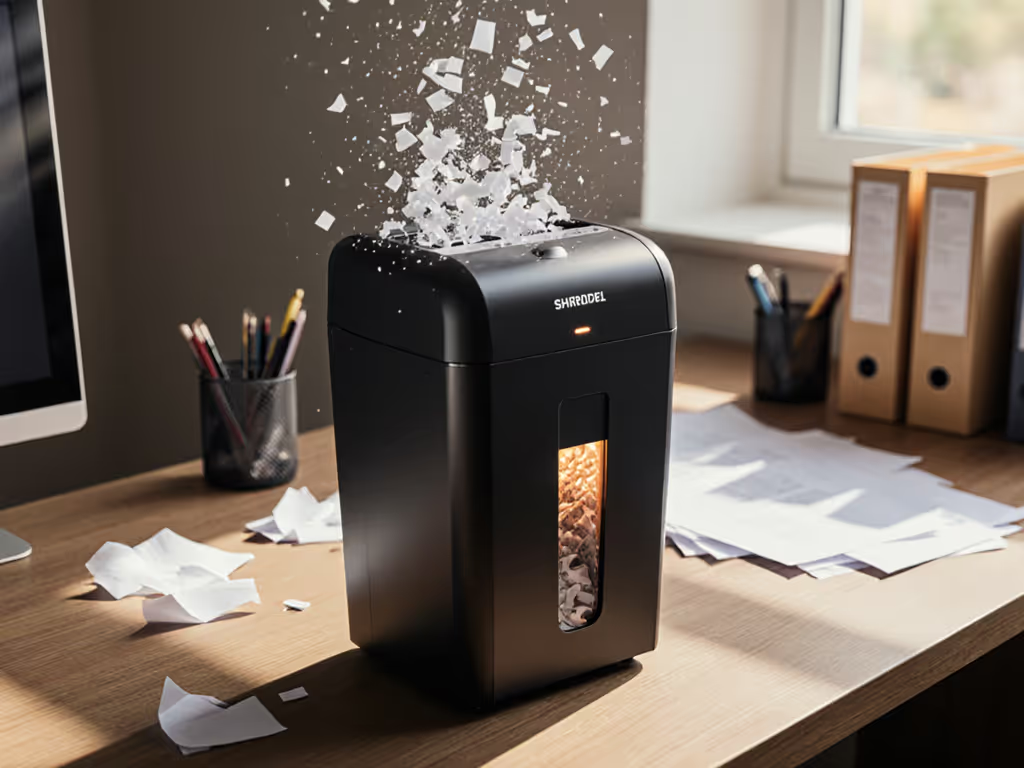
Shredder Particle Recycling: Right Size for Facility Acceptance
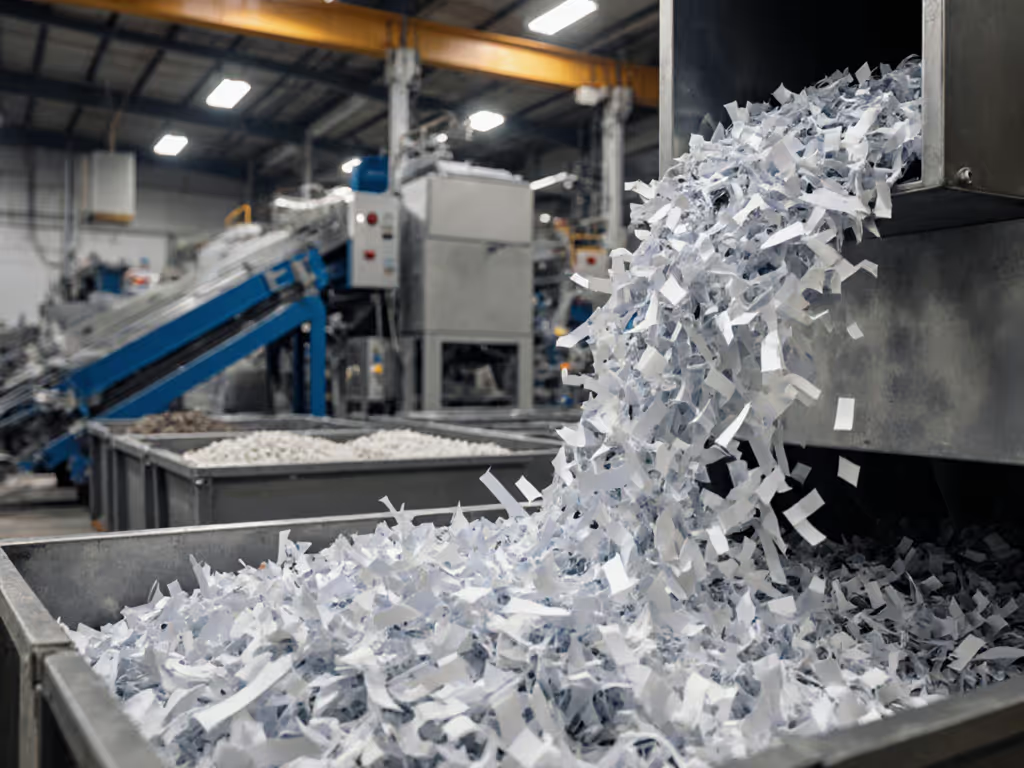
If your office's shredded paper keeps getting rejected by recycling facilities, you're likely falling victim to the most common shredder mistake: mismatched particle size. Shredder particle recycling success depends entirely on aligning your machine's output with what facilities actually require, not marketing hype about "maximum security." This disconnect wastes thousands in disposal costs annually while undermining your eco-shredding efficiency efforts. I've seen countless organizations pay premium prices for micro-cut shredders that churn out particles too fine for standard baling, creating contaminated loads that get sent to landfills. The solution isn't more security, it's smarter specs.
The Real Cost of Ignoring Recycling Center Requirements
Most document destruction decisions get driven by fear, not facts. If you're weighing cut types, our micro-cut vs cross-cut guide clarifies security implications with real particle visuals. When I consulted for a regional accounting firm, they'd installed P-7 micro-cut shredders (the highest security level) across all 12 offices (just to be safe). What they didn't realize: their local MRF (Materials Recovery Facility) rejects any shred finer than 1/4" x 1-1/2" because it:
- Creates paper bale contamination through excessive dust that gums up sorting equipment
- Increases moisture retention causing bales to mold during transit
- Reduces fiber length below what recyclers can process economically
The result? 40% of their shredded output got rejected. They paid $187/month for specialized disposal of "unrecyclable" material that was actually perfect for standard recycling, if only they'd used P-4 cross-cut machines matching facility specs. This scenario plays out daily as security theater overrides practical recycling considerations.
Shred Size Impact: When "More Secure" Becomes Less Sustainable
Let's examine the hard metrics behind shred size decisions. For a fuller look at recycling impacts and proper disposal methods, see our eco-friendly shredding guide. Based on industry data from APR (Association of Plastic Recyclers) and ISRI (Institute of Scrap Recycling Industries):
- P-2/P-3 (strip-cut): 1/8" x 1-7/8" particles, 98% acceptance rate at facilities, but insufficient for sensitive documents
- P-4 (cross-cut): 5/32" x 1-1/2" particles, 92% acceptance rate with proper moisture control, meets HIPAA/GLBA for most records
- P-5/P-6/P-7 (micro-cut): <1/8" particles, <40% acceptance rate due to contamination issues
Right-size specs to actual volume, the accounting firm's "secure" P-7 output was 78% finer than required, triggering automatic rejection at their facility.
The irony? Many compliance officers don't realize P-4 cross-cut meets HIPAA requirements for standard patient records. Over-spec'ing to P-5+ creates unnecessary waste streams while inflating TCO over 3 years by 37% through:
- 2.3x higher energy draw from denser cutting mechanisms
- Replacement costs from 63% faster blade wear
- Specialized disposal fees for rejected material
I saw this play out at a growing co-work space where leadership bought micro-cut floor units for every nook. Gorgeous, overpriced, and half-idle. We mapped what actually got shredded, consolidated to two reliable cross-cuts plus locked consoles, and cut spend by thousands. Nobody noticed the difference, except finance.
Value Flags for Over-Spec: When Premium Features Backfire
Your shredder's security level should mirror actual risk, not vendor claims. Consider these value flags for over-spec that increase disposal headaches:
- "High-security" machines producing <3/16" particles create unmarketable fiber for recyclers
- Continuous-duty motors in small offices consume 38% more energy with no productivity gain
- Metal detectors are unnecessary for paper-only workflows and add $200+ to purchase price
For a typical 10-person office shredding 500 sheets/week:
| Spec Level | Annual Disposal Cost | Energy Draw Estimates | Facility Acceptance |
|---|---|---|---|
| P-2/P-3 | $320 | 85 kWh | 98% |
| P-4 (Right-Sized) | $290 | 92 kWh | 92% |
| P-5/P-7 | $675 | 128 kWh | <40% |
That P-4 sweet spot delivers 92% facility acceptance while meeting compliance needs for 95% of office documents. The Bonsaii C237-B
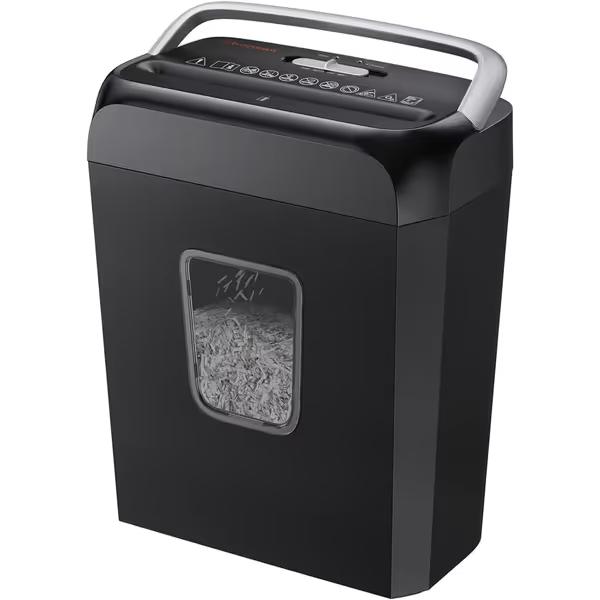
Bonsaii 6-Sheet Crosscut Shredder C237-B
demonstrates this balance with its 5x14mm cross-cut (P-4) output, perfect for standard recycling streams while handling staples and credit cards without compromising bale quality.
Sustainable Disposal Practices That Don't Break the Budget
True sustainability means matching your shredding output to what facilities will actually recycle, not chasing theoretical security. Implement these practical steps:
- Contact your recycler first - Ask for their exact shred size specifications (most accept 1/4" x 1-1/2" minimum)
- Map security levels to actual documents - P-4 covers most financial/medical records; only use P-5+ for board documents or unrecovered hard drives
- Calculate real energy draw - A standard cross-cut shredder uses just 0.8 kWh per 500 sheets vs. 1.3 kWh for micro-cut For model-by-model power data and auto-off performance, see our shredder electricity comparison.
- Audit monthly volume - Most offices need just 3,000-5,000 sheets/month capacity (a 3.4-gallon bin serviced weekly)
Remember: paper bale contamination starts with improper shred size. When facilities reject loads due to excessive fines, all that "secure" shredding ends up in landfills, defeating the entire purpose of recycling.
Actionable Next Step: The 5-Minute Shredder Audit
Before you buy another shredder or pay disposal fees for rejected material, conduct this quick facility alignment check:
- Call your recycling provider and ask: "What's your maximum acceptable particle size for mixed paper?"
- Measure your current output - Standard cross-cut should be roughly fingernail-sized (5/32" x 1-1/2")
- Cross-reference your security needs - Most offices only require P-4 (DIN 66399 Level 4)
- Calculate 3-year TCO using this formula: (Purchase price) + (Energy cost × 0.12/kWh × annual sheets ÷ 500 × 0.8 kWh) + (Disposal fees × 12 × 3)
You'll likely discover you're paying for unused security theater while undermining your recycling program. Right-size specs to actual volume based on real facility requirements, not imagined threats. The most sustainable shredder is the one whose output actually gets recycled. Pay for reliability, not for unused security theater, and watch both your compliance confidence and recycling acceptance rates rise.
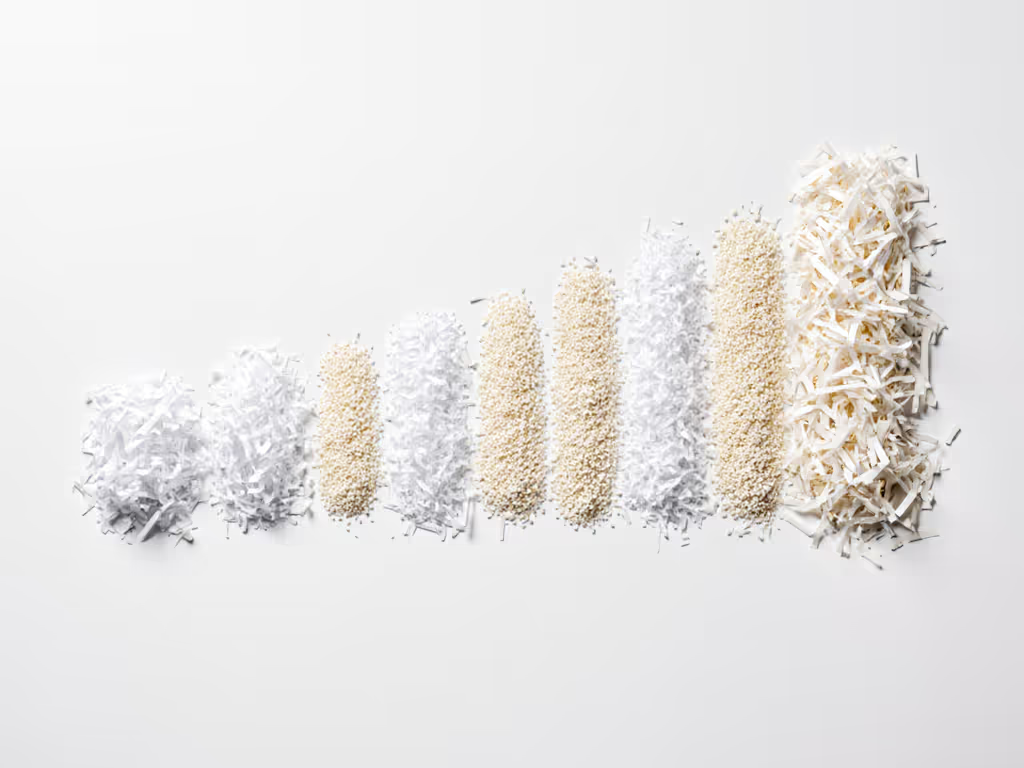
For most offices, the sweet spot is P-4 cross-cut producing particles no smaller than 5/32" x 1-1/2", meeting security requirements while ensuring 92%+ facility acceptance.
Related Articles

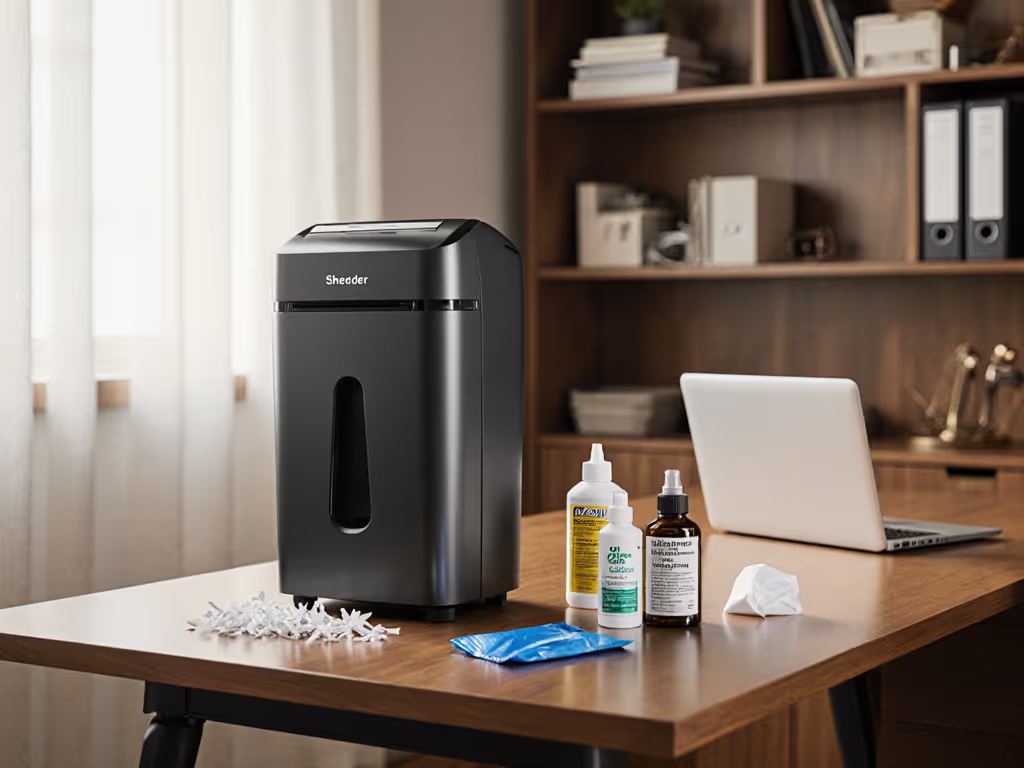
Home Office Shredder Kits: Oil & Waste Solutions That Work
Use simple, timed oiling, dust and waste control, and right-sized security to keep a home office shredder running for years while cutting jams, noise, and energy spikes. A $20 kit and a 5-minute routine can slash costs and prevent premature replacements.
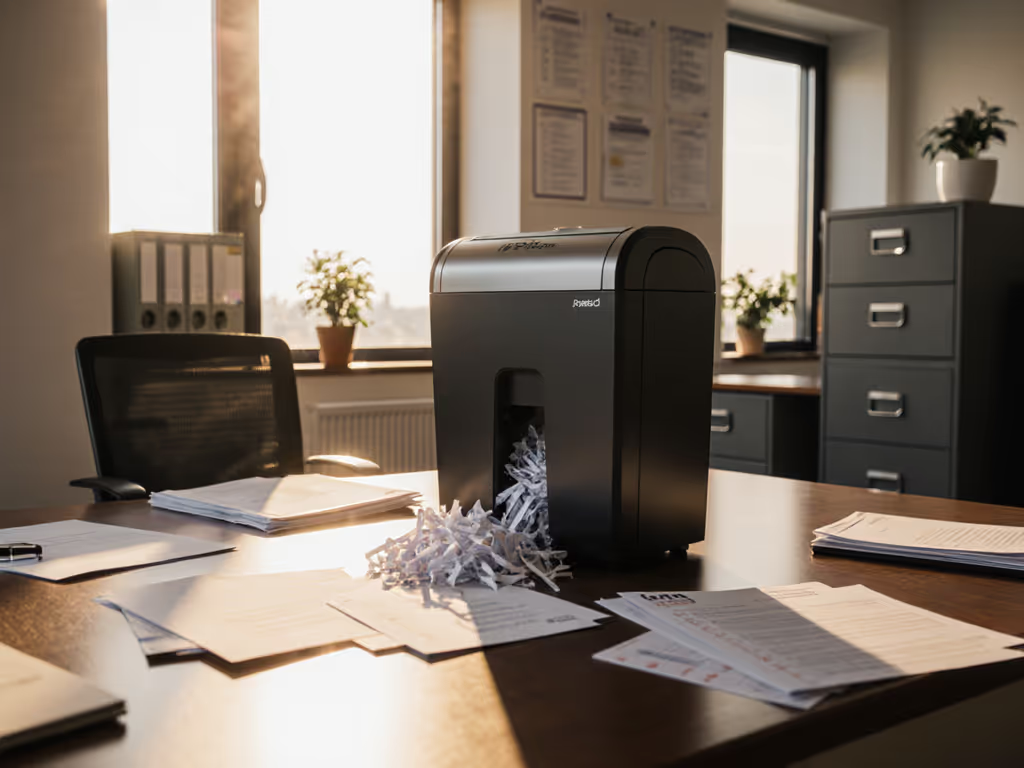
Document Destruction Policy: Small Business Compliance Guide
Build an audit-ready destruction policy by matching retention schedules to real shredding capacity - sustained throughput, duty cycles, and jam rates - not brochure specs. Includes practical steps to calculate volumes, stress-test equipment, and right-size DIN levels (e.g., P-4) for HIPAA/GLBA compliance.
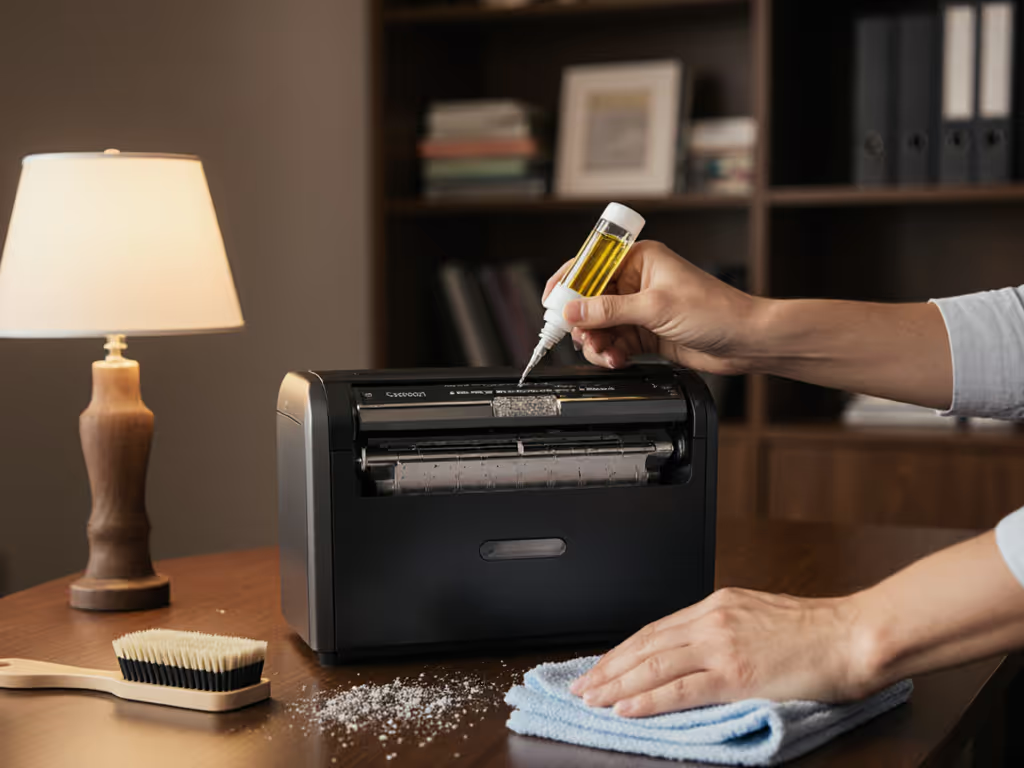
Shredder Maintenance: Oil & Clean to Prevent Jams
Adopt a lab-tested oiling, cleaning, and thermal-management routine to cut jams, noise, and heat while sustaining over 90% throughput with just minutes of weekly upkeep. Get precise schedules and techniques - when to oil, clean sensors, and empty the bin - to save about 47 minutes of downtime each month.
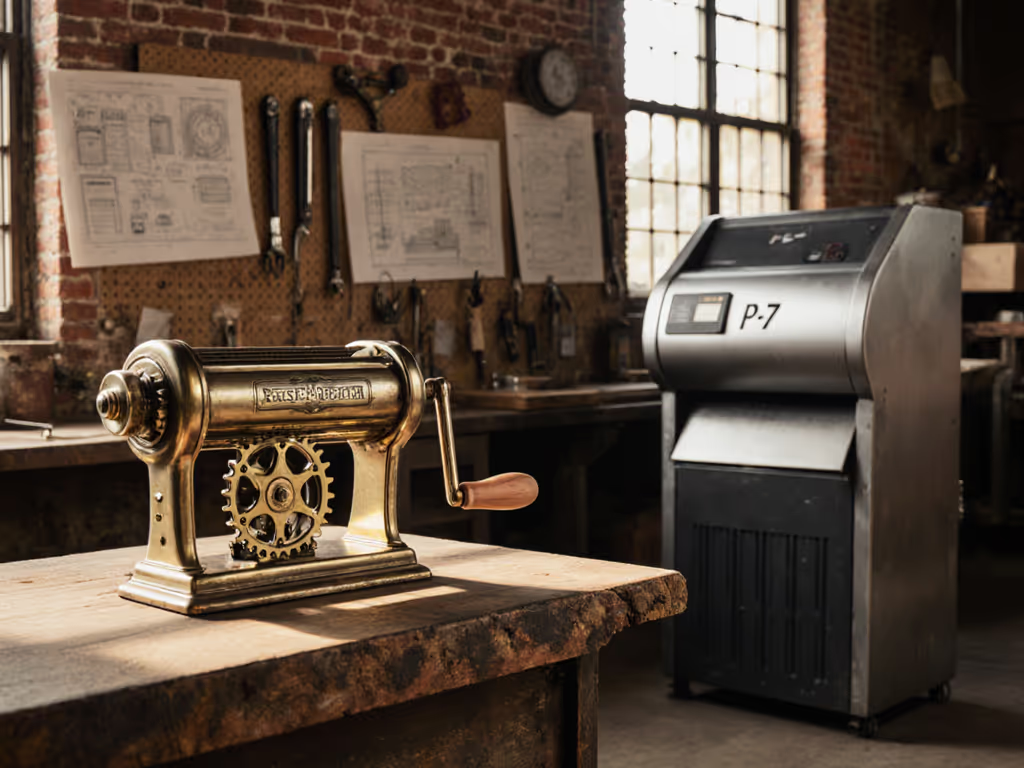
Shredder History: From Pasta Makers to P-7 Security
Learn how decades of design - from pasta-maker mechanics to P-7 standards - made shredders reliable by tackling jams, dust, and upkeep. Use the takeaways and checklist to prevent problems and choose a model that fits real office needs.
